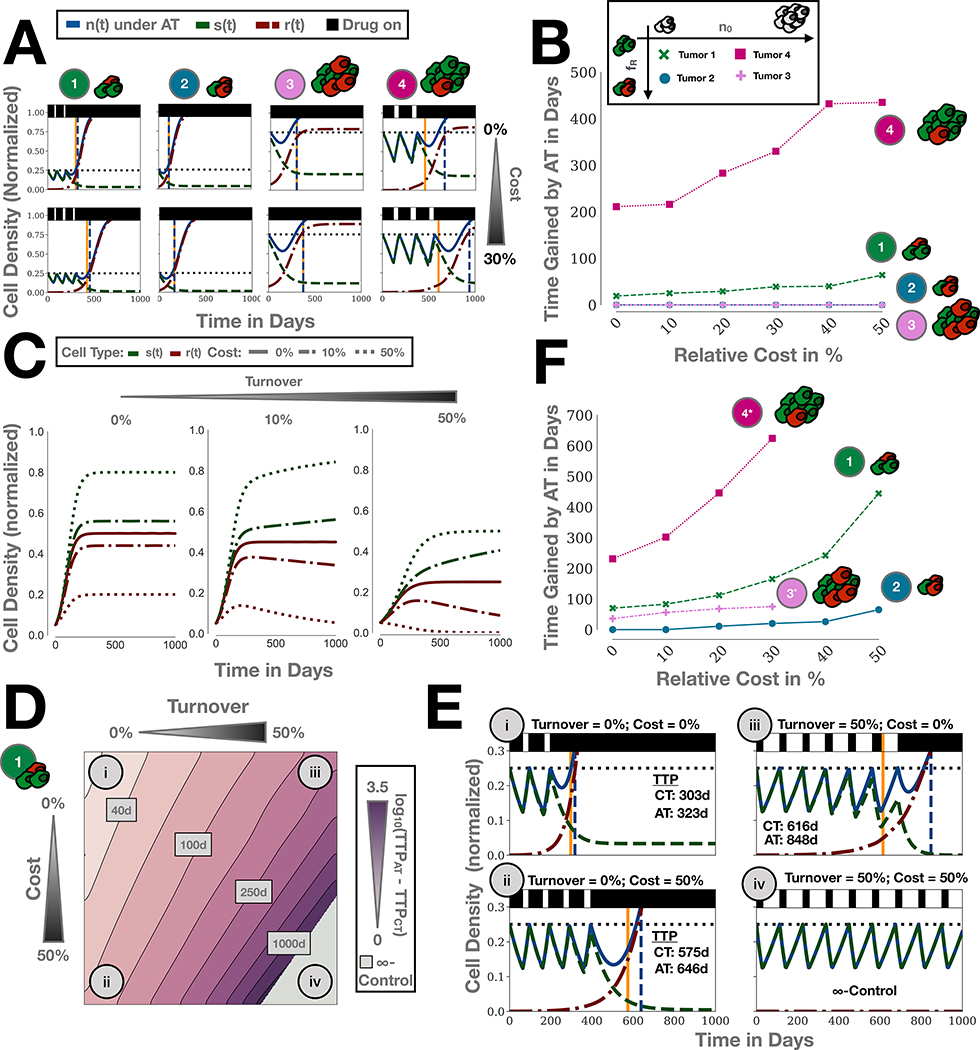Figure 4:
The impact of a resistance cost on adaptive therapy depends on cellular turnover. A) In the absence of turnover (dˆT = 0) a cost enhances adaptive therapy only when resistance is rare and tumors are close to carrying capacity. Simulations of Tumors 1–4 from Figure 3A with and without a 30% cost of resistance (rˆR = 70%; Tumors 1 & 4 given in Figure 3; Tumor 2: (n0,fR) = (25%,10%); Tumor 3: (n0,fR) = (25%,10%)). B) Parameter sweep of the benefit of adaptive therapy (TTPAT-TTPCT) for different levels of costs for Tumors 1–4, corroborating the results in A). Note that the curves for Tumor 3 & 4 overlap. C) Simulation of a competition experiment (no drug; n0 = 10%, fR = 50%), showing that the impact of a cost on the selection against resistance is modulated by cellular turnover. D) Impact of turnover on adaptive therapy for Tumor 1 for different values of cost. Turnover increases the benefit of adaptive therapy and amplifies the effect of a cost. E) Simulations of the treatment dynamics for four combinations of cost and turnover corresponding to the four case studies highlighted in B. F) Parameter sweep as in B) but with a turnover of 25%. Turnover increases TTP gained by adaptive therapy both in the presence and absence of a resistance cost for a range of different tumor compositions (Tumors 1 and 2 as in Figure 3A; Tumor 3*: (n0,fR) = (50%,10%); Tumor 4*: (n0,fR) = (50%,0.1%); above a cost of 30% Tumors 3* and 4* become indefinitely controllable and so no TTP can be obtained).

